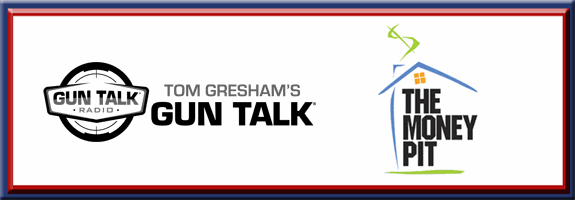By Holland Cooke
Consultant
 NEW YORK — Lots of long-time-no-see hugs among 9,500 of us at the Javits Center as the National Association of Broadcasters resumed its October event – like much of life, interrupted by COVID – and increasingly pertinent to radio.
NEW YORK — Lots of long-time-no-see hugs among 9,500 of us at the Javits Center as the National Association of Broadcasters resumed its October event – like much of life, interrupted by COVID – and increasingly pertinent to radio.
Though long-timers long for the days when the exhibit hall was populated by jingle gypsies, Hiney Wine, and bumpersticker and T-shirt vendors, we now find the teleprompters and studio lighting and cloud software that are becoming tools of the trade for radio broadcasters who leverage their transmitter brand to take content (and advertisers) everywhere consumers consume us.
Radio mojo aplenty at the first in-person Marconi Awards post-pandemic
Second biggest applause during this well-produced event was for 2022 NAB Distinguished Service Award recipient Ryan Seacrest, whose philanthropic foundation has some 70 employees staffing broadcast centers he’s funding in children’s hospitals, where ailing kiddos interview stars Seacrest lines-up.
Biggest hand of the night was for College Station of the Year WRHU-FM, Hofstra University. Standing-O for a new generation of radio broadcasters. Award categories also now include Best Radio Podcast of the Year (KSL-FM, Salt Lake City). Congrats too to National Radio Award winners Fred and Paul Jacobs, Jacobs Media.
Mostly, we’re back
Many sent-home during the shutdown ended-up working there for keeps, but not as many as some advertisers seem to think. Per Cumulus/Westwood One chief insights officer Pierre Bouvard:
- 14% of USA pre-COVID commuters are now working at home. Here’s the disconnect: More than twice as many (37%) of marketers and agency people work remotely.
- Nielsen: Radio still has 98% of its 2019 Reach.
- September numbers: Morning AQH is up 10% from July. “People are complaining about traffic again!”
- AM/FM radio has 89% Share of ad-supported audio in-car. Though listeners do stream there, many pay for the ad-free tier. “You need an electron microscope to see” audience for ad-supported streamers.
And recalling the birth of FM radio, at-which many then scoffed, Pierre teed-up another session, saying “Every local American radio station needs to have a podcast.”
“What’s your local podcast strategy?”
“It’s happening in a meaningful, measurable way,” Amplifi Media’s Steve Goldstein pronounced, ticking-off consumption numbers.
- Calling AM radio “a struggle” Hubbard Radio VP strategy Jeremy Sinon and fellow panelists described how on-demand audio bolsters and extends transmitter content.
- CityCast CEO David Plotz runs “a national network of local focused podcasts and newspapers around the country” and says their secret sauce is “daily morning podcasts, 6:00 am drop, one big story, and a news roundup” and a daily newsletter. And in his experience, “It’s much easier to grow a newsletter than to grow a podcast.”
So what is podcast “success?”
- NOT radio-ratings-size numbers, panelists agreed. Sheryl Worsley, VP podcasting, Bonneville, and Marconi winner KSL Podcasts: “People who are listening are really into-it.” So 500 raving-fan subscribers “isn’t a failure.” Sinon, agreeing: “There’s a lot of podcasters who would KILL for 2,000 listeners,” peanuts as an on-air cume number.
- Worsley: “You DO have to give it time. Podcasting is a grind. It could take a year, two years. Three months doesn’t tell.”
- But Plotz warned that, unlike on-air programming, “feedback is lacking.” Because listeners opt-in, podcasters tend to get positive feedback. “People who host podcasts don’t realize their podcast is not a success.”
Monetizing station podcasts?
- Jason Barrett, Barrett Sports Media: “Push it strong” on-air. Otherwise, Worsley warns: “You can have a great podcast that nobody knows about.”
- And, in her experience: “If you have the right project and tie it to the right client, you can get clients [at launch] who pay on ego.” And she cautioned against “thinking that it’s radio. Listening is different. The ads should be different.”
- Sinon calls station podcasts “local content for local advertisers.”
The biggest mistake stations make podcasting?
At Q+A time, I polled the panel:
- NOT podcasting. Worsley: “If you don’t try, it’s worse than nothing,” because national podcasts will attract local ears and, potentially, ad dollars. She described KSL’s “Project Recovery” podcast, by a local TV personality who came back from rehab and does a podcast about alcohol addiction, a big success there.
- Barrett warned about going too-niche: “Is a great host doing an uninteresting topic? It can’t be a podcast just because it’s not on the radio.”
Bottom-lining the opportunity, Barrett: If we all live in a phone and we all use streaming then you have to live in those spaces and you have to do programming for that.” And who better than radio broadcasters, Goldstein reckons, recalling a Dunkin billboard that pictured a bagel: “Round with a whole in it. We can do that.”
Holland Cooke (HollandCooke.com) is author of the E-book “Multiply Your Podcast Subscribers, Without Buying Clicks,” available from Talkers books; and “Spot-On: Commercial Copy Points That Earned The Benjamins,” a FREE download: and “Inflation Hacks: Save Those Benjamins,” the E-book and FREE on-air features. HC is a consultant working at the intersection of broadcasting and the Internet. Follow him on Twitter @HollandCooke



